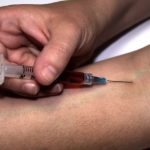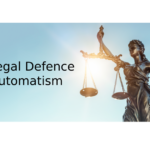Should We Bring Back The Youth Drug and Alcohol Court?

Adolescence is a time of transition and change as young people find their feet in the adult world.
For many, it also marks the start of new experiences such as drinking, going out, and experimenting with drugs – often behind the backs of unsuspecting parents.
Most young people survive their teenage years without any real problems and eventually make the transition into adulthood with great success.
But for some, adolescence brings with it bad habits and mistakes which can quickly progress into lifelong problems.
For 12 years, the Youth Drug and Alcohol Court played an important role in the New South Wales criminal justice system, offering kids who had fallen by the wayside a second chance in tackling drug and alcohol related offending.
But in 2012, the state government decided to axe the program, citing funding problems in spite of evidence that the court worked to rehabilitate young offenders.
Three years on, drug and alcohol abuse continues to affect young people around the country – and many say that the court should never have closed its doors.
What Was the Youth Drug and Alcohol Court?
The Court was an initiative borne out of the 1999 Drug Summit which aimed to draw attention to drug problems in the wider community and develop strategies to address these issues.
At the time of the Summit, the Drug Court of New South Wales had been up and running for less than a year – but it was already producing great results.
One of the recommendations of the Summit was to expand the program into the Children’s Court, offering young offenders the opportunity to tackle drug and alcohol problems which were linked to criminal offending.
Following a successful trial at Campbelltown, the Youth Drug and Alcohol Court officially opened its doors on 31 July 2000.
Like its adult equivalent, the initiative brought together a range of government agencies including the Children’s Court, the NSW Police Force, Legal Aid, Juvenile Justice, Justice Health, the Department of Community Services, and the Department of Education and Training.
It was largely modelled off the adult program and offered kids aged between 14 and 18, whose offending was associated with drug and alcohol problems, and who were facing the prospect of being sentenced to a juvenile correctional facility, the opportunity to transform their lives for the better.
Those who met the eligibility criteria and who were accepted into the program were granted bail and had their court matters adjourned for six to twelve months ‘to give the young person an opportunity to demonstrate a capacity for rehabilitation by completing the treatment plan.’
During this time, the young person was required to undertake a tailored program which often involved a period of residential rehabilitation, complemented by ongoing counselling, and assistance in engaging in education and employment, amongst other things.
Participants had a Juvenile Justice Officer assigned to their case, who would facilitate the measures.
Many participants came from broken homes where they had suffered neglect, physical and emotional abuse, and witnessed their parents’ own battles with drug and alcohol addiction.
The residential rehabilitation component of the program therefore gave them a safe haven away from home where they could detoxify before engaging in rehabilitation – and those who were unable to return home after the completion of this component were offered support to find appropriate accommodation within the community.
As a young person progressed through the program, representatives from each of the government agencies reported back to the Magistrate, who could ‘reward’ positive progress and order treatment reviews when slip-ups occurred.
Those who successfully completed the program avoided being sent to a juvenile correctional centre; instead receiving a non-custodial penalty.
Those who didn’t make it through found themselves before the Magistrate again waiting to be sentenced – and often ended up in custody.
Should We Bring it Back?
During its prime, the Court welcomed around 120 young people through its doors each year.
Around 20 completed the program annually, with many dropping out prior to completion. The program cost $4 million a year to run.
Because of the cost, the Court was an easy target during the 2012 budget cuts. Those who were involved in the program when it was axed were directed into other drug and alcohol treatment services which lacked the collaborative approach of the Court.
Those who support the program say that it helped save the lives of many young people – and that government officials failed to realise that ‘the court [was] dealing with some of the most difficult young people in the criminal justice system.’
In this context, the failures of the Youth Drug and Alcohol Court may be seen as successes.
And while $4 million may seem like a lot of money, the figure pales in comparison to the cost involved in incarcerating a young person, which can cost up to $227,760 a year for a single child.
Then there’s the costs associated with a lifetime of offending – many kids who begin committing offences during their teenage years continue as adults if there is no intervention by programs such as the Youth Drug and Alcohol Court.
In the words of Magistrate Hillary Hannam, who ran the Court for many years, the $4 million:
‘represents a fraction of the cost of the impact that those people will have on the system for the rest of their lives because statistically we know that if there’s no intervention they have a very high chance of spending the rest of their lives in custody.’






